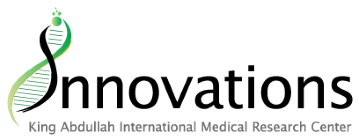
Changes in the expression of circadian clock genes have been found in people with leukaemia.IMAGEBROKER / Alamy Stock Photo
The circadian clock is the internal rhythm of the body thatresponds to night and day, typically following a 24-hourcycle. KAIMRC researchers have shown that many circadian clock genes are suppressed in leukaemia patients, aidingthe disease’s progression. The team also suggests a role for one key protein in restoring the circadian clock in chronicmyeloid leukaemia.
The circadian clock controls many key processes, including metabolism, sleep-wake patterns and the regulation of genes. Circadian rhythms and clock genes are disrupted in various diseases, including cancer and diabetes. Leukaemiais a malignant blood cancer that manifests in both acute and chronic forms. Changes to circadian genes have been reported in leukaemia patients.
Mohamed Boudjelal, at KAIMRC’s drug discovery unit, and co-workers used gene expression profiling to examine circadian clock genes in acute and chronic forms of leukaemia before, during and after treatment.
The researchers analysed the expression of seven clock genes, including Cry2 and BMAL1, in blood samples collected from 75 patients at different stages of treatment for leukaemia and from 30 healthy controls. They found that the majority of clock genes were suppressed in patients with acute myeloid leukaemia with the exception of Cry2, whose levels increased toward the end of treatment and during relapse.
A similar story unfolded with chronic forms of the illness, with all analysed clock genes suppressed, except for Cry2,which was unaffected in the initial stages of the disease.
The team also investigated the role of Sirt1, a protein known to regulate genes associated with the circadian clock. Theyfound that inhibiting Sirt1 resulted in partial recovery of circadian rhythm in patients with chronic myeloid leukaemiaby normalising the switching on and off of the BMAL1 clock gene.
Therapies targeting Sirt1 could improve dysfunctional circadian rhythm and enhance the effectiveness of existingchemotherapeutic drugs.
“A comprehensive understanding of how circadian genes behave in leukaemia will provide insights into howthe molecular clock is impacted in this disease,” write the researchers in their paper published in the Journal of Circadian Rhythms. “Such an understanding could also be used to develop treatment strategies whereby drugs are administered to patients… in synchrony with their molecular clocks to facilitate greater effectiveness.”


